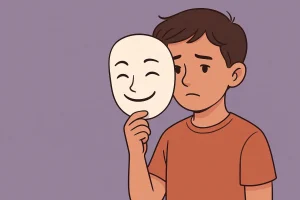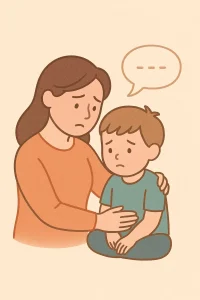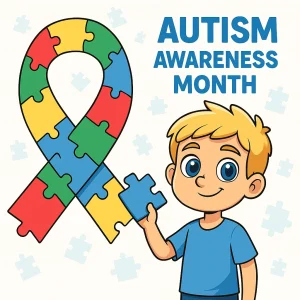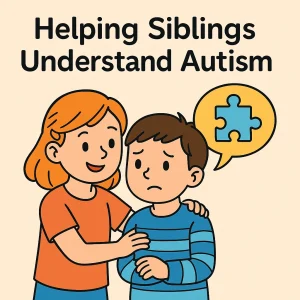History of Autism: Unraveling Autism’s History
By Wellness Hub
Last Updated: April 5, 2023
I. Introduction
Autism Spectrum Disorder (ASD) is a complex neurodevelopmental condition that primarily affects an individual’s social interactions, communication skills, and behavior. It is called a “spectrum” disorder because the type and severity of symptoms can vary widely among individuals. Some people with ASD are highly skilled in certain areas, while others may require significant support in their daily lives.

This article aims to trace the journey of autism through history, exploring how our understanding of it has evolved over time. From initial misconceptions to the modern recognition of autism as a diverse and multifaceted condition, we’ll delve into the key milestones that have shaped our current understanding of autism.
II. Early Conceptions and Misunderstandings
Eugen Bleuler’s Introduction of “Autism”
The term “autism” was first coined by Swiss psychiatrist Eugen Bleuler in the early 20th century. Bleuler used it to describe a symptom of schizophrenia, where individuals seemed to be withdrawn into their own inner world. This initial definition was quite different from how we understand autism today.
Leo Kanner’s Identification of “Early Infantile Autism”
In 1943, a significant shift occurred when Leo Kanner, an Austrian-American psychiatrist, identified autism as a distinct condition in children. He called it “early infantile autism.” Kanner observed 11 children who displayed unique behaviors, including challenges in social interactions, a desire for sameness, and difficulty in developing language skills. This was a groundbreaking moment, as it separated autism from schizophrenia and started the journey towards understanding it as a unique condition.
Also read: Understanding Kanner Syndrome: A Comprehensive Guide
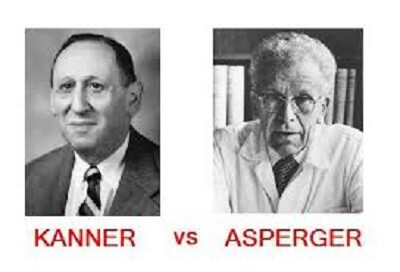
The scientists of Autism
Hans Asperger’s Description of a Similar Condition
Almost simultaneously in 1944, Hans Asperger, an Austrian pediatrician, described a condition similar to Kanner’s autism in a group of children. He noted that these children had difficulties with social interaction but possessed average or above-average intelligence and language skills. Asperger referred to this condition as “autistic psychopathy,” which later came to be known as Asperger’s Syndrome, a term that has recently been integrated into the broader category of ASD.
These early stages in the understanding of autism set the foundation for decades of research, debate, and discovery, shaping how we perceive and support those with ASD today.
III. The Shift in Perspective
Moving Beyond the “Refrigerator Mother” Theory
In the 1960s, the understanding of autism underwent a crucial transformation. Previously, the “refrigerator mother” theory, popularized by psychologists like Bruno Bettelheim, falsely suggested that autism resulted from cold and unemotional parenting. This theory placed undue blame on families and obscured the true nature of autism. By the 1970s, however, this notion was largely discredited, paving the way for a more scientific and empathetic approach to understanding autism.
Autism as a Genetic and Neurodevelopmental Disorder
Gradually, the focus shifted to recognizing autism as a genetic and neurodevelopmental disorder. This paradigm shift was significantly influenced by research that highlighted the biological and neurological underpinnings of autism. It became clear that autism was not caused by parenting styles but was a condition rooted in developmental differences.
The Landmark Twin Study
A landmark moment in this shift was the 1977 twin study by Susan Folstein and Michael Rutter. Their research demonstrated a high concordance rate for autism in identical twins compared to fraternal twins. This study was pivotal in establishing a strong genetic component in the development of autism, laying the groundwork for future genetic research.
IV. Diagnostic Evolution and Autism Spectrum
Changes in the DSM
The evolution of autism diagnosis has been closely tied to changes in the Diagnostic and Statistical Manual of Mental Disorders (DSM), published by the American Psychiatric Association. Initially categorized under childhood schizophrenia, autism’s classification underwent significant revisions. By 1980, the DSM-III recognized autism as a distinct developmental disorder, separating it from schizophrenia and refining its diagnostic criteria.
Introduction of the Autism Spectrum
A crucial development in understanding autism came with the introduction of the “autism spectrum” concept. The DSM-IV, released in 1994, and its subsequent revision, the DSM-5, embraced this concept. This change acknowledged the wide range of symptoms and severities within autism, highlighting its diverse nature.
Expansion of Diagnostic Criteria
These revisions also expanded the diagnostic criteria to encompass milder forms of autism, like Asperger’s Syndrome. This inclusive approach allowed for a broader understanding of the spectrum and recognized the unique challenges and strengths of individuals with varying levels of autism.
V. Modern Understanding and Treatment Approaches
The Emergence of Applied Behavioral Analysis (ABA)
In the realm of autism treatment, Applied Behavioral Analysis (ABA) has become a cornerstone. Developed in the 1960s by psychologist Ivar Lovaas, ABA is a therapy based on the principles of learning and behavior. It aims to improve social, communication, and learning skills through positive reinforcement. ABA has been widely adopted and is recognized for its effectiveness, particularly in early childhood interventions.
Understanding Autism’s Neurological Basis
Over the years, the understanding of autism as a neurological and genetic condition has deepened. Research has shown that autism is associated with a variety of genetic mutations and alterations in brain development. This growing knowledge helps in tailoring more effective interventions and supports the development of targeted therapies.
Treatment Approaches: Beyond Medication
While there is no cure for autism, various treatment approaches aim to improve the quality of life for those on the spectrum. These include speech and language therapy, occupational therapy, and social skills training. Sensory integration therapy is also used to help individuals with autism process sensory information more effectively. Medicinal treatments may be used to manage specific symptoms or co-occurring conditions, but the emphasis is increasingly on holistic and individualized approaches.
VI. Autism in the Public Eye and Advocacy
Public Awareness and Media Influence
Public awareness of autism has significantly increased, partly due to media portrayals. Films like “Rain Man,” featuring an autistic savant character, have played a role in bringing autism into the public consciousness, although they have also contributed to stereotypes. The Autism Awareness Puzzle Ribbon, adopted in 1999, has become a global symbol for autism awareness, representing the complexity and diversity of the autism spectrum.
Advocacy Groups and Legislative Changes
Advocacy groups have been instrumental in promoting the rights and needs of individuals with autism. Organizations like Autism Speaks and the Autism Society have advocated for research funding, policy changes, and support services. Legislative changes, like the inclusion of autism in the Individuals with Disabilities Education Act (IDEA) in the U.S., have ensured better educational opportunities and accommodations for individuals with autism.
The Neurodiversity Movement and Self-Advocacy
The neurodiversity movement, emerging in the late 1990s, has significantly influenced how society views autism. It advocates for recognizing neurological differences, like autism, as natural human variations rather than disorders to be cured. Self-advocacy by individuals with autism has been a driving force in this movement, emphasizing acceptance, inclusion, and respect for neurodiversity.
VII. Global Perspectives and Statistics
Prevalence of Autism Worldwide
The prevalence of autism spectrum disorder (ASD) varies globally, reflecting not only genetic and environmental factors but also differences in diagnostic criteria and awareness. Studies in different countries have reported varying prevalence rates, with recent research suggesting an average of about 1 in 59 children being diagnosed with autism. These variations in prevalence rates can partly be attributed to how autism is diagnosed and understood in different cultural contexts.
Cultural Influences on Autism Diagnosis
Cultural differences significantly impact the diagnosis and perception of autism. In some cultures, behaviors associated with autism might be viewed through a different lens, leading to underdiagnosis or misdiagnosis. Additionally, stigma or lack of awareness in certain societies can affect how individuals with autism and their families are treated and supported.
VIII. Challenges and Future Directions
Advancements in Autism Research
Ongoing research continues to explore the genetic and environmental causes of autism, striving to unravel its complex etiology. This research is crucial for developing more effective treatments and support systems for individuals with autism.
Personalized Treatment Approaches
As our understanding of autism deepens, the need for personalized treatment approaches becomes increasingly clear. Recognizing the unique needs and strengths of each individual with autism is key to providing effective support and interventions.
Importance of Inclusive Policies
Creating inclusive policies and fostering societal understanding are essential for supporting individuals with autism. This includes ensuring access to education, employment opportunities, and community participation, which are vital for a fulfilling and independent life.
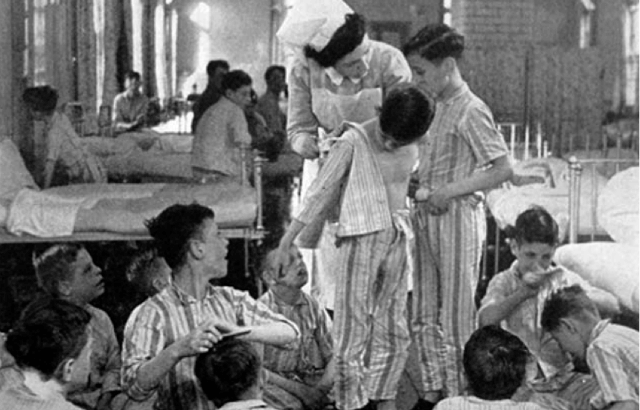
IX. Conclusion
Reflecting on the Journey of Understanding Autism
The understanding of autism has evolved dramatically over the past century. From early misconceptions to a more nuanced understanding of its spectrum nature, we have made significant strides in recognizing and supporting individuals with autism.
The Need for Continued Research and Advocacy
Continued research and advocacy are imperative for further advancements in understanding autism. Advocacy plays a vital role in raising awareness, shaping policies, and ensuring that the needs of individuals with autism are met.
A Call for Societal Acceptance and Support
Fostering societal acceptance and support for individuals with autism is crucial. Embracing neurodiversity and providing inclusive environments where individuals with autism can thrive is a collective responsibility that benefits society as a whole.
X. References
For further reading and to understand the credibility of the information presented, the following sources have been referenced:
- American Psychiatric Association. (2013). Diagnostic and Statistical Manual of Mental Disorders (5th ed.).
- Autism Speaks: www.autismspeaks.org
- Folstein, S., & Rutter, M. (1977). Genetic influences and infantile autism.
- Wing, L., & Gould, J. (1979). Severe impairments of social interaction and associated abnormalities in children: Epidemiology and classification.
Frequently Asked Questions (FAQs)
1. What is Autism Spectrum Disorder (ASD)?
Autism Spectrum Disorder is a neurodevelopmental condition characterized by challenges in social interaction, communication, and repetitive behaviors. It is called a “spectrum” disorder because it manifests differently in each individual.
2. How is autism diagnosed?
Autism is diagnosed based on observed behavior and developmental history. The criteria outlined in the Diagnostic and Statistical Manual of Mental Disorders (DSM-5) are commonly used. Diagnosis often involves a team of specialists and includes assessments of communication, behavior, and social interaction.
3. What causes autism?
The exact cause of autism is not known. Current research suggests that a combination of genetic and environmental factors contribute to its development. There is no evidence to support the theory that vaccines cause autism.
4. Can autism be cured?
There is no cure for autism, but early intervention and therapies can significantly improve skills and abilities. The focus is often on maximizing the individual’s potential and quality of life.
5. What are some common treatments for autism?
Treatments for autism include behavioral therapies like Applied Behavioral Analysis (ABA), speech and language therapy, occupational therapy, and social skills training. Medications may be used to address specific symptoms like anxiety or attention issues.
6. What is meant by ‘neurodiversity’?
Neurodiversity is a concept that views neurological differences like autism as natural variations of the human brain rather than deficits. It promotes the idea of accepting and respecting these differences.
7. How prevalent is autism?
Prevalence rates vary, but recent studies suggest about 1 in 59 children are diagnosed with autism. This rate can vary based on diagnostic criteria and awareness in different regions.
8. Is there a link between genetics and autism?
Yes, genetics play a significant role in autism. Research indicates that several genes may be involved, and having a family member with autism increases the likelihood of an autism diagnosis.
9. What are the early signs of autism in children?
Early signs can include delayed speech, limited eye contact, lack of interest in other children, repetitive behaviors, and resistance to changes in routine.
10. How can society support individuals with autism?
Society can support individuals with autism by fostering inclusive environments, providing educational and employment opportunities, promoting awareness and understanding of autism, and respecting the needs and abilities of those on the autism spectrum.
Book your Free Consultation Today
Parent/Caregiver Info:
Client’s Details:
* Error Message
